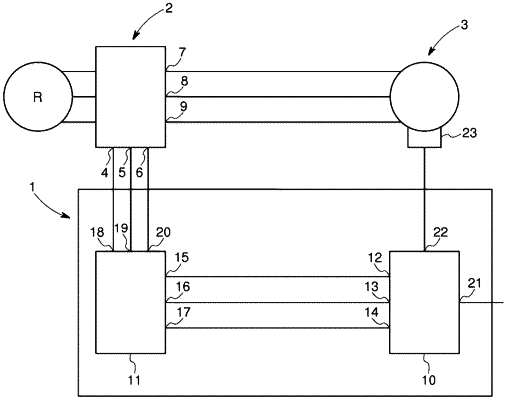| CPC H02M 5/2932 (2021.05) [H02M 1/0025 (2021.05); H02M 7/5395 (2013.01)] | 8 Claims |

|
1. A method for controlling a polyphase power converter driven by an algorithm of a pulse width modulation type, wherein a control parameter comprising a drive setpoint value or a pulse duration associated with the drive setpoint value of at least one phase situated in a non-linearity zone of a chart, is modified by modifying the value of said parameter so that it is in a linearity zone of the chart, and the control parameter of each of the phases is modified in the same manner, characterized in that the method comprises:
a) a first step during which at least one corrective value associated by the chart with the control parameter is determined;
b) a second step during which a set of differences between each of the corrective values and the control parameter is determined; and
c) a third step during which the corrective value associated with a smallest of the difference determined in step b) is selected, a driving value is determined for each phase by subtracting the difference associated with said corrective value of the control parameter if the corrective value is less than the control parameter situated in the non-linearity zone or by adding the difference associated with said corrective value to the control parameter if the corrective value is greater than the control parameter situated in the non-linearity zone, and it is determined if each control parameter is situated in the non-linearity zone of the chart.
|